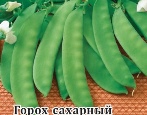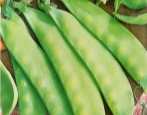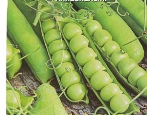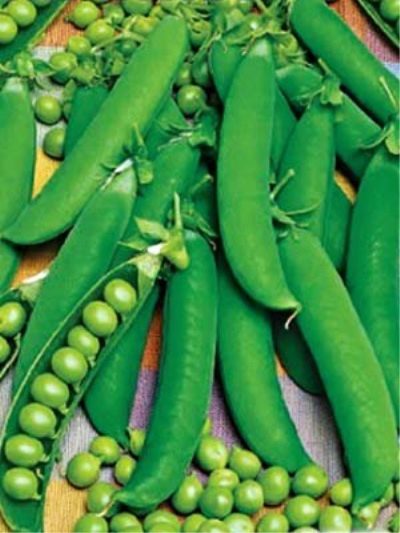
- Authors: Kashnova E.V., Belonosova N.T., Zharkova S.V., Postoeva M.N., Stolbova T.M., Malykhina O.V., Ponomareva V.A.
- Year of approval: 2013
- Ripening terms: very early
- View: peeling
- The period from germination to technical ripeness: 32-35 days
- Stem length, cm: 70
- Sheet: normal type, medium-sized leaves, green with a grayish tinge and waxy bloom
- Stipules: medium with a waxy bloom and strong spotting
- Flowers: white, medium
- Parchment layer: available
Peas Nikitka is a high-yielding variety with strong immunity, which is suitable for growing both in the open field and in the greenhouse.
Breeding history
Domestic breeders were engaged in breeding the variety. Scientists managed to obtain peas with improved taste characteristics and increased resistance to diseases and pest attacks. The variety was entered into the State Register in 2013.
Description of the variety
Peas Nikitka is an early pea variety with the following characteristics:
stem - up to 70 cm long;
leaves are medium in size, light green;
stipules - small, with a waxy coating;
flowers are white, small.
Each peduncle forms 1-2 small flowers, due to which it is possible to achieve a bountiful harvest.
Characterization of the appearance of plants, beans and seeds
Nikita is grown mainly in open ground, which allows the stems to get stronger and get rid of the need for a mandatory garter. Bean characteristics:
form - straight;
sizes - medium;
skin color - light green;
the number of seeds is from 8 to 9 pieces.
The skin has a layer of parchment, so it is not suitable for eating without first cleaning it. The average weight of 1000 seeds is 199-225 g. Large peas attract gardeners, so the variety is in demand in many regions.
Purpose and taste
Pea varieties are suitable for fresh consumption, as well as for canning and home cooking. The seeds have excellent taste characteristics, appreciated by the tasters.
Ripening terms
Peas belong to a group of plants with an early ripening period. The first beans are formed after 32-35 days.
Yield
The yield indicator with a competent approach to the cultivation of peas is on average 64-74 c / ha.
Growing and care
Nikitka peas are suitable for growing outdoors, but sometimes gardeners plant seeds in greenhouse conditions. Regardless of the location chosen, it is worth preparing the seed first.
Selection. For this, the seeds are soaked in a glass of water, and empty samples that have floated to the surface are removed.
Disinfection. It means keeping the seeds in a solution of potassium permanganate or other drugs that strengthen the immune system.
Treatment. The use of stimulants improves the survival rate of seeds in the soil.
Simultaneously with the preparation of seeds, they begin to fertilize and loosen the soil in order to saturate the soil with oxygen and the necessary amount of nutrients. Only then can you start planting seeds. When carrying out garden work, they adhere to the following scheme:
15 cm recede between the seeds;
between the rows they stand up to 30 cm;
the planting depth of the seed is 2-3 cm.
Caring for the planted culture includes the following steps.
Watering. At first, before the peas bloom, it is recommended to add water to the soil once a week.Subsequently, watering should be increased up to 2-3 times a week, additionally focusing on climatic and weather conditions. At the same time, it is important not to overmoisten the soil in order to prevent rotting of the peas.
Loosening and weeding. Both procedures should be performed after each watering in order to eliminate potential diseases and pests. In addition, loosening accelerates the flow of nutrients to the roots of the peas.
Top dressing. On average, during the growing season, it is necessary to fertilize peas 2-3 times, introducing organic and complex compositions during flowering and pod formation.
Pinching. Increases the yield rate. To achieve what you want, it is recommended to pinch the tops.
Peas Nikita does not need a garter, but if you wish, you can take care of this using wooden or plastic supports and garden wire.

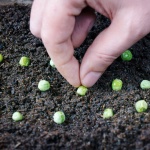
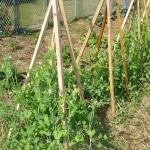

Soil requirements
It is recommended to grow Nikita in fertile soils. Tips for choosing a location:
the site must be sunny or partially shaded;
the place should be calm;
the groundwater level should be low.
Preference should be given to areas with a neutral acidity index. If necessary, this can be achieved by applying special fertilizers.
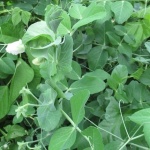
Required climatic conditions
Planting seeds is best done in warm and sunny weather. The optimal time is the last days of April or the beginning of May. It is important that the soil has time to warm up to +8 degrees Celsius so that the seeds take root quickly. Planting too early will lead to the death of the plant, late planting will lead to a deterioration in the taste of the peas.
Disease and pest resistance
The Nikitka variety is distinguished by strong immunity, however, with improper care, the probability of plant death from diseases and pests is high. And also some insects are able to change the taste of seeds. To reduce the risk of damage to peas, it is worth taking care of preventive working off. The work is carried out using special preparations, which can be purchased at any gardening store. Additionally, gardeners are advised to disinfect seeds before planting in a solution of potassium permanganate.


